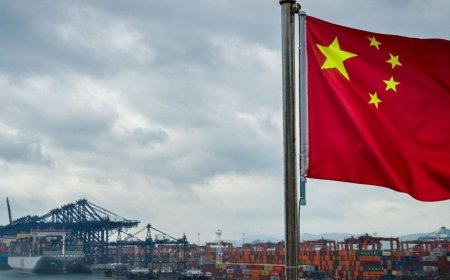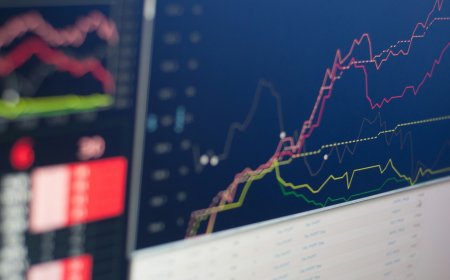Copper Hits Two-Week High on Softer Dollar and Iran-Israel Ceasefire
Copper hits a two-week high as the U.S. dollar weakens and tensions ease between Iran and Israel. Supply risks and Chinese demand add to bullish momentum.

Copper prices surged to their highest level in two weeks on Tuesday, buoyed by a weakening U.S. dollar and renewed geopolitical stability in the Middle East following a ceasefire agreement between Iran and Israel. The benchmark three-month copper on the London Metal Exchange (LME) rose 1.8% to $9,837 per metric ton, marking its best performance since June 10.
Dollar Weakness Lifts Industrial Metals
A key driver behind copper’s recent momentum has been the softening of the U.S. dollar, which makes dollar-priced metals cheaper for holders of other currencies. The U.S. Dollar Index (DXY) retreated below 104.5, a level last seen in early June, as investor appetite shifted away from safe-haven assets in light of easing global tensions.
“Copper and other base metals are responding positively to the dollar’s decline,” said James Norwood, base metals analyst at FXMetals Research. “As the greenback slips, importers—particularly from emerging markets—are more willing to resume buying at favorable price points.”
With inflation showing signs of moderation in the U.S., markets are increasingly betting on a Federal Reserve interest rate cut by September, which would add further downside pressure on the dollar and lift demand for industrial commodities.
Ceasefire Calms Global Nerves
The geopolitical backdrop also turned supportive for risk assets, including copper. A ceasefire agreement brokered by Qatar and the European Union between Iran and Israel has significantly reduced fears of a prolonged conflict that could have disrupted global trade and oil flows in the region.
While copper is not directly linked to energy markets, reduced geopolitical risk often translates into broader investor optimism, encouraging a return to risk-on assets.
“The ceasefire is easing fears of escalation in the Middle East, and that’s playing into the hands of industrial commodities,” noted Priya Mehta, commodity strategist at Edelweiss Securities. “Investors had been on edge about supply chain vulnerabilities and inflation shocks. With tensions easing, copper’s fundamentals are back in focus.”
Supply Concerns Linger
Although short-term macro relief has boosted prices, the copper market remains tight, with supply risks continuing to loom large. Output disruptions in Peru—the world’s second-largest copper producer—have resurfaced due to renewed worker protests at the Las Bambas and Antamina mines.
Moreover, recent data from the International Copper Study Group (ICSG) indicated a global refined copper deficit of 56,000 tonnes in April, compared to a surplus of 39,000 tonnes in March.
“With mine production facing hiccups and smelter activity yet to recover fully, the supply-demand imbalance will likely persist into Q3,” said Manoj Gupta, senior base metals trader at Kotak Commodities. “This makes copper fundamentally supported, especially with Chinese demand expected to rebound post-monsoon.”
Chinese Demand Recovery in Sight
Market participants are closely watching China, the world’s largest consumer of copper, for cues on future price direction. Industrial activity in China is slowly improving as the government continues to roll out stimulus measures to support infrastructure spending and real estate.
“Copper demand in China tends to ramp up from July as construction activity picks up after seasonal slowdowns,” said Mehta. “With Beijing accelerating fiscal support, the market could tighten significantly in the second half of the year.”
Chinese warehouse inventories of refined copper have also declined for three consecutive weeks, further signaling a pickup in consumption.
Technical and Futures Market Signals
On the technical front, copper has broken above its 50-day moving average of $9,740, a key bullish signal. Analysts note that the next resistance level is seen around $10,000, while immediate support lies at $9,650.
Speculative interest in copper is also on the rise. The latest Commitment of Traders (COT) report shows net long positions in copper futures have increased by 8% week-on-week, suggesting growing investor confidence in the metal’s upside.
Investor Outlook: Positive but Watchful
Despite the recent rally, analysts urge caution, as copper’s gains remain sensitive to macroeconomic signals. While the ceasefire has lowered geopolitical risks and the dollar’s softness is aiding sentiment, a sudden reversal in either could derail momentum.
“Copper is in a sweet spot now,” Norwood said. “But traders should remain vigilant. Any signs of renewed Fed hawkishness or a breakdown in the ceasefire could trigger profit-taking.”
Still, the broader outlook for copper remains bullish, especially considering the long-term demand prospects tied to energy transition technologies like EVs, batteries, and renewables—all of which are heavily copper-intensive.
As of now, the combination of macro tailwinds, supply constraints, and a pickup in industrial demand has set the stage for a sustained move higher in copper prices.
What's Your Reaction?
 Like
0
Like
0
 Dislike
0
Dislike
0
 Love
0
Love
0
 Funny
0
Funny
0
 Angry
0
Angry
0
 Sad
0
Sad
0
 Wow
0
Wow
0













































































